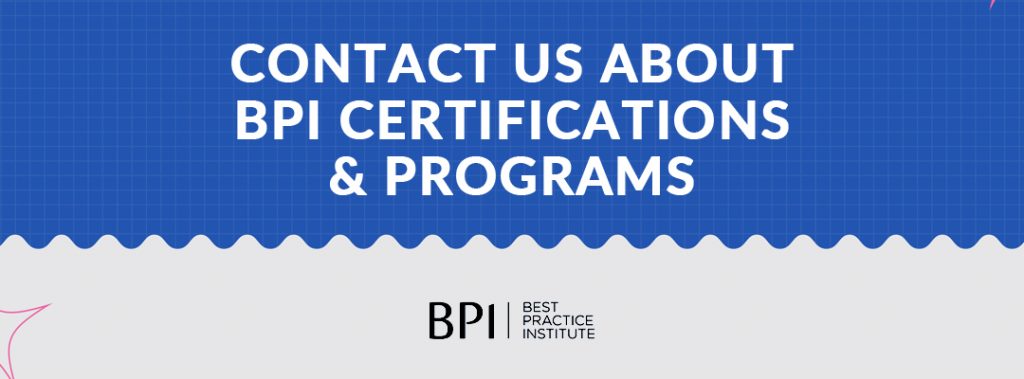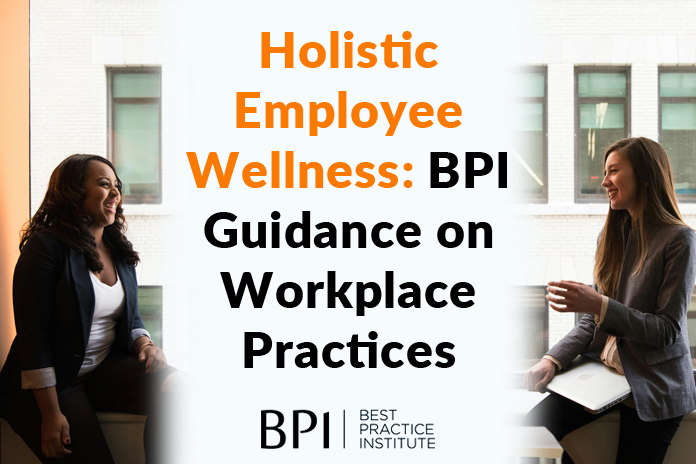Organizations succeed when they support holistic wellness from within, not just for their customers. Wellness spans mental, physical, emotional, social, and even spiritual well-being, and research confirms its impact. Holistic workplace practices do indeed improve engagement, reduce sick days, and create sustainable performance.
Harmful stress drains the ability to perform, leading to wasted time, lost resources, and a negative impact on organizational culture. Deloitte identifies three drivers that shape well-being:
- Leadership behavior
- Job and organization design
- Working practices
These “work determinants” affect how employees feel and act daily. Employees need workplaces where leaders behave with empathy, job design supports balance, and collaboration remains respectful.
Effective leaders support these principles without prescribing fixed “modus operandi,” focusing instead on nurturing wellness through systemic care. Executives support direct leaders by designing environments where emotional wellness thrives.
McKinsey defines holistic health as blending physical, mental, social, and spiritual health. Employees performing well on all these fronts report higher innovation and lower absenteeism. Companies that build supportive conditions (reasonable hours, meaningful work, and humane policies) enable wellness to grow.
Research supports that wellness programs reduce absenteeism. Meta-analyses show absenteeism costs fall by about $2.73 per dollar spent on wellness programs, with productivity and health cost savings too. One Canada-based study linked wellness programs to 1.5 to 1.7 fewer sick days per employee per year.
These results hold true when programs integrate mental health support, job design changes, and leadership alignment. Emotional connection grows where wellness programs reflect authentic concern, rather than surface perks.
The Test and Learn Best Practices by Louis Carter is a prime example of this holistic approach. It encourages leaders to assess employee needs, align programs with job demands, and embed mental health support into the culture.
Organizations that design wellness intentionally across leadership actions, supportive policies, and social connection create environments of trust and emotional wellness. This approach leads to fewer unscheduled absences, deeper employee emotional connection, and sustainable engagement.
Creating Supportive Leadership and Culture for Wellness
Leadership plays a vital role in wellness culture. Employees look to their direct managers and executives for tone and example. Deloitte research suggests that leaders must show empathy, offer recognition, and avoid micromanagement to build trust and well-being. When leaders act with respect and genuine care, employees feel the workplace values their whole selves. That emotional connection reduces stress and supports attendance.
Employees suffer when leaders overlook mental health signals. Deloitte found that many workers do not use available well-being resources because access feels difficult or stigmatized. Executives can change that by modeling open conversations and normalizing wellness check-ins.
When leaders talk about emotional struggles and support seeking help, they foster emotional connection and reduce barriers. That openness leads to better mental health use and fewer absences.
Organizations must shift culture, not just offer programs. Harvard and Deloitte commentary argue that wellness initiatives alone cannot fix the root causes of stress. Leaders must address workload, performance demands, and reward systems that cause distress. Where executives reshape roles to allow purpose, autonomy, and balance, emotional wellness improves.
These initiatives must not be framed around self-care alone. Employees who feel understood and supported by leadership report a stronger connection and show up consistently. Companies see emotional connection rise when colleagues empathize and lift each other. That emotional wellness landscape supports attendance and long-term engagement.
Designing Jobs and Policies That Support Holistic Wellness
Organizations can deepen workplace emotional wellness by designing roles with balance and choice. Deloitte shows that poor job design, including overload or unclear expectations, harms mental and social health.
Executives and leaders can reshape roles by aligning tasks with employee purpose, controlling workload, and enabling autonomy. When employees wield agency, their emotional connection to the organization grows, and engagement rises. This supports holistic employee wellness and helps reduce absenteeism across the workplace.
Hybrid and flexible work arrangements also support emotional and social needs. McKinsey’s Health Institute reports that employees with access to remote or flexible schedules report better holistic health across mental, social, and emotional dimensions.
Enabling autonomy and work-life balance, employers show they trust staff. This trust engenders a deeper emotional connection and creates emotional wellness in daily work life. That bond reduces unplanned time-off and sustains engagement.
Leave Policies for Well Being
Effective leave policies matter for well-being, too. Harvard Business Review emphasizes that when employees know they can access sick, mental health, or caregiving leave without penalty, they feel emotionally supported. Clear communication and normalized use of leave reduce shame or hesitation.
When policies support life’s demands, emotional connection grows. Employees feel their whole selves matter at work. This leads to fewer absences and sustained commitment.
Policies must address covering demands and identity safety. Deloitte reports that covering pressures—feeling compelled to hide one’s authentic self—cause well-being decline for many workers.
Organizations that foster inclusive environments, where staff can speak up, connect emotionally, and bring their full selves, build emotional trust. Emotional connection and workplace emotional wellness deepen in these cultures. When people feel safe, they take fewer mental health-related absences and stay engaged.
Embedding Mental Health Support into Daily Work Life
Well-designed wellness integrates mental health tools across workflows. Deloitte advises organizations to embed mental health support, such as peer coaching, access to counselling, and early intervention tools within normal operations.
Employees encounter support where they work, reducing friction and stigma. When mental wellness becomes part of daily life, emotional connection strengthens. Staff feel cared for consistently, not only when stress peaks. This level of support helps reduce absenteeism workplace-wide.
McKinsey’s analysis shows that workplace investments in health deliver measurable return on engagement and attendance. Employers that integrate mental health training and awareness sessions into weekly routines show improvements in attendance and emotional connection.
When workers learn resilience skills and emotional wellness strategies during regular work cycles, they apply them in real time. That practice builds emotional bonds and reduces emotional exhaustion.
Organizations also benefit when they train managers in mental wellness literacy. Deloitte reports that many managers cannot identify or address mental health issues in team members. Training so leaders can listen empathetically, refer to support modules, and normalize wellness conversations creates emotional connection. When team members trust their boss to care and act, emotional wellness flourishes. That trust reduces absenteeism workplace-wide as concerns surface earlier, and interventions follow.
A multi-dimensional approach works best when data integrates across wellness pillars. McKinsey shows that holistic health sees only 57% of employees (out of a sample of 30,000) report good health across mental, physical, emotional, and social dimensions.
Employers who measure outcomes across these areas can tailor interventions precisely. When policies reflect real employee needs, emotional connection grows. The result shows up in better attendance, stronger engagement, and meaningful return on wellness investments.
Measuring Impact: Feedback, Metrics, and Continuous Improvement
Leaders must track wellness impact in real time. Deloitte identifies that combining sentiment surveys with operational data like absentee rates, overtime hours, and engagement metrics gives insight into emotional wellness trends.
When companies look beyond surface perks and integrate absenteeism workplace data with emotional connection feedback, they learn what truly works. This feedback loop drives continuous improvement in wellness design and reduces absenteeism.
Our Test and Learn perspective encourages empirical experimentation. By piloting wellness initiatives, monitoring outcomes, and adjusting based on feedback, organizations build practical, tailored practices.
When experiments focus on emotional connection, mental load reduction, and policy clarity, results emerge in lower absence and improved well-being. Organizations iterate based on real impact, not guesswork, strengthening employee emotional connection and workplace emotional wellness.
Leaders also benefit from benchmarking with peers and industry standards. McKinsey and Deloitte both stress that employers can assess their wellness maturity against global norms. Organizations that lag behind often miss out on absence reductions and engagement gains.
Benchmarking drives accountability. Executives who compare their policies and outcomes can pivot strategies and improve emotional connection. This structured evaluation enhances wellness impact across business units.
It is important to note that transparency matters quite a lot for wellness initiatives. PwC’s 2023 Employee Financial Wellness Survey suggests that investors now evaluate companies on mental health metrics just as they do on financial ones.
Organizations that publish results on absenteeism, engagement, and wellness programming signal seriousness. When executives share progress, employees perceive genuine care and build an emotional connection. That domestic trust leads to stronger attendance patterns and reduced absenteeism workplace-wide.
Conclusion
Holistic employee wellness requires emotional connectedness embedded in everyday leadership, job design, policy, and feedback. Organizations that adopt these practices reduce absenteeism workplace-wide and strengthen workplace emotional wellness.
BPI encourages leaders to gather real data, pilot support tools, and adapt based on what employees need most. When emotional connection grows, engagement thrives, and absence falls. If you seek to embed these holistic wellness practices in your organization, BPI invites you to explore our leadership training modules and collaborative learning offerings.

Contact Us About BPI Certifications & Programs










